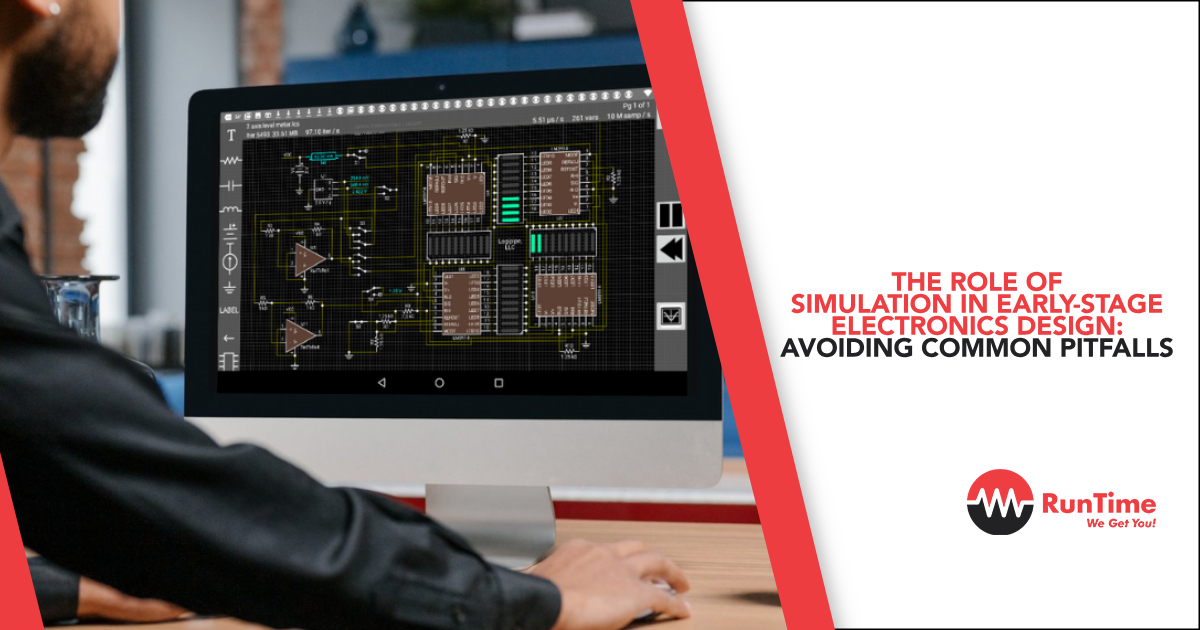Simulation tools are indispensable in the world of electronics design, particularly in the early stages of project development. By allowing engineers to visualize and test their concepts without the need for physical prototypes, simulations can save significant time and resources. However, as powerful as these tools are, they come with their own set of challenges and potential pitfalls. This article aims to guide embedded engineers through the effective use of simulation in early-stage electronics design, highlighting common pitfalls and providing strategies to avoid them.
Understanding the Importance of Simulation in Electronics Design
Simulation in electronics design is not just a luxury; it’s a necessity. The complexity of modern electronic devices, with their compact sizes and integration of multiple functions, makes it almost impossible to proceed without a robust simulation phase. Simulations help in several key areas:
- Verification of Concepts: Before any hardware is built, simulation can verify whether the concept will work as intended.
- Testing Functionality: Simulations test the functionality of a circuit, ensuring that all parts work together harmoniously.
- Identifying Errors Early: It’s cheaper and less time-consuming to fix issues during the simulation phase than after building the prototype.
- Optimizing Designs: Engineers can tweak and optimize designs to achieve the best performance without the need for multiple physical prototypes.
Choosing the Right Simulation Tools
There is a wide array of simulation tools available, each suited to different types of electronic design tasks. Tools like SPICE (Simulation Program with Integrated Circuit Emphasis) are fundamental for analog and power electronics circuits. For digital circuits, VHDL (VHSIC Hardware Description Language) and Verilog simulators are commonly used. Specialized tools, such as MATLAB and Simulink, provide a broader platform for simulating complex systems that include both hardware and software components.
Selecting the right tool depends on several factors:
- Complexity of the Design: More complex designs might require more advanced simulation tools that offer detailed modeling capabilities.
- Integration Needs: Consider whether the tool integrates well with other software used in the design process, such as PCB design software or CAD tools.
- Budget and Resources: High-fidelity simulation tools can be expensive, so budget constraints can affect the choice of simulation software.
Common Pitfalls in Early-Stage Simulation
1. Over-Reliance on Ideal Components
One of the most common mistakes in early-stage design simulation is using idealized components rather than realistic models. Components in simulation libraries may not accurately reflect the real-world characteristics of their physical counterparts. This discrepancy can lead to designs that work perfectly in a simulated environment but fail in the real world.
Solution: Always use manufacturer-provided models or models that closely mimic the real characteristics of the components. Where possible, include variations in component values to see how they affect the circuit’s performance.
2. Ignoring Environmental Factors
Simulations often focus on the circuit in isolation, without considering external environmental factors like temperature, electromagnetic interference, or mechanical stresses.
Solution: Incorporate environmental parameters into your simulations. Tools like Finite Element Analysis (FEA) can be used to simulate the effects of temperature and stress on component performance.
3. Inadequate Validation of Simulation Models
A simulation is only as good as the model it uses. Inadequate validation of simulation models can lead to a false sense of security about a design’s robustness.
Solution: Validate simulation models against known benchmarks or previous similar successful projects. Calibration with real-world data is crucial to ensure the model’s accuracy.
4. Complexity Management
As projects grow more complex, so do the simulations, which can lead to significant increases in time and computational resources required to perform simulations.
Solution: Simplify models where possible, and use techniques like modular design to isolate different functions of the circuit. This approach not only makes simulations faster and less resource-intensive but also makes it easier to identify and fix specific issues.
5. Failure to Iterate
Often, once a simulation validates a design, further testing and iteration might be overlooked. However, continuous iteration is key to refining a design and adapting to new challenges and findings.
Solution: Establish a cyclical process of design, simulate, analyze, and refine. Use each simulation as a learning tool to improve the next design iteration.
Case Studies
Case Study 1: Automotive Electronics
In an automotive electronics project, simulations helped identify a potential failure mode in an ABS braking system circuit under low-temperature conditions. By adjusting the design parameters based on simulation results, engineers were able to enhance the reliability of the braking system before any physical prototype was built.
Case Study 2: Consumer Electronics
For a high-volume consumer electronics product, simulation was used to optimize the power management system to extend battery life. Early simulations indicated that changing certain components and redesigning the power supply layout could reduce power consumption significantly without impacting performance.
Conclusion
Simulation in early-stage electronics design is a powerful approach that, when used correctly, can significantly enhance the success rate of engineering projects. By being aware of common pitfalls and adopting strategies to avoid them, embedded engineers can leverage these tools to their full potential, ensuring robust, efficient, and cost-effective designs. The goal is not just to use simulation tools but to integrate them effectively into the design process to drive innovation and excellence in electronics design.









